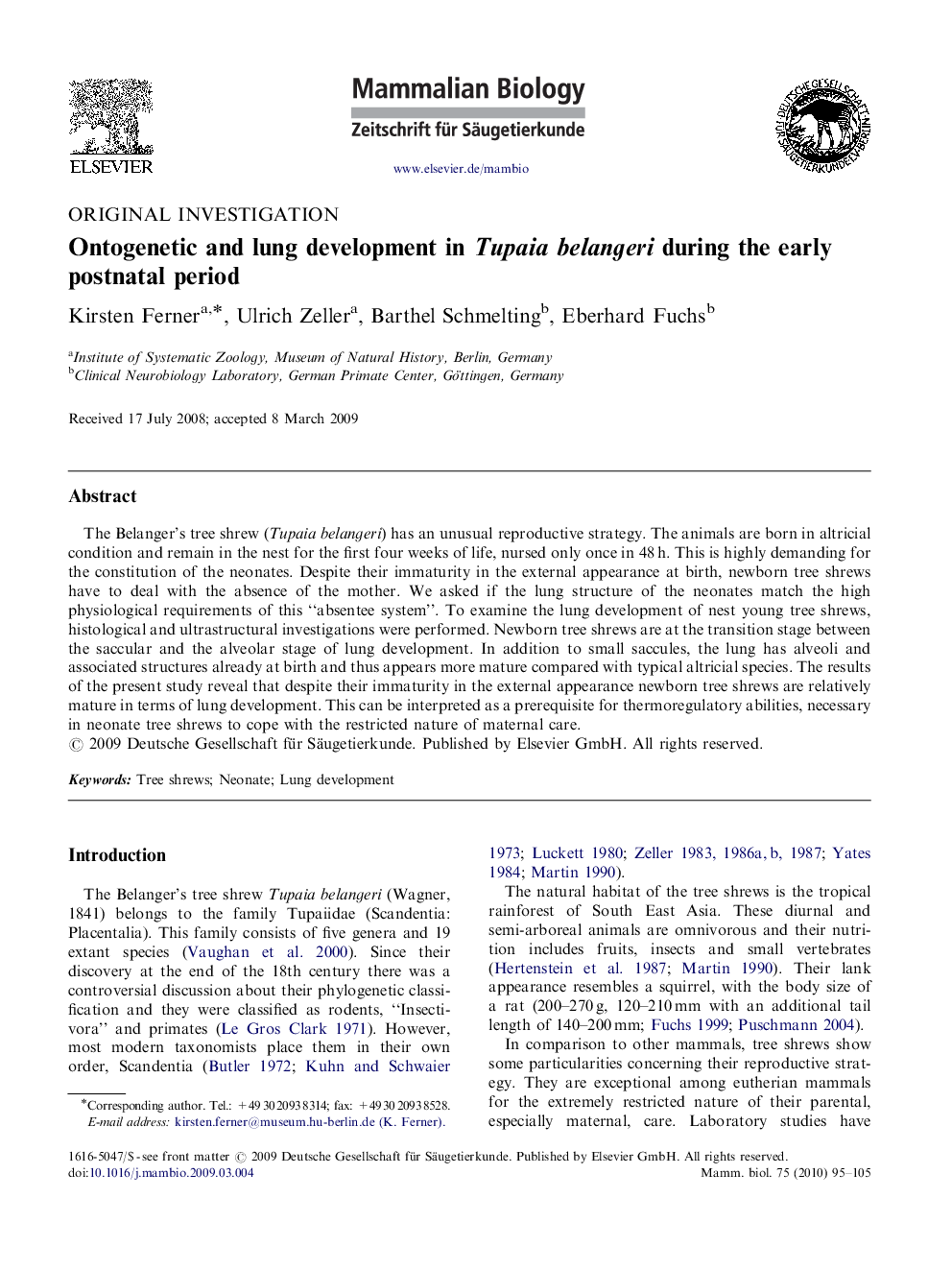| کد مقاله | کد نشریه | سال انتشار | مقاله انگلیسی | نسخه تمام متن |
|---|---|---|---|---|
| 2194101 | 1098418 | 2010 | 11 صفحه PDF | دانلود رایگان |

The Belanger's tree shrew (Tupaia belangeri) has an unusual reproductive strategy. The animals are born in altricial condition and remain in the nest for the first four weeks of life, nursed only once in 48 h. This is highly demanding for the constitution of the neonates. Despite their immaturity in the external appearance at birth, newborn tree shrews have to deal with the absence of the mother. We asked if the lung structure of the neonates match the high physiological requirements of this “absentee system”. To examine the lung development of nest young tree shrews, histological and ultrastructural investigations were performed. Newborn tree shrews are at the transition stage between the saccular and the alveolar stage of lung development. In addition to small saccules, the lung has alveoli and associated structures already at birth and thus appears more mature compared with typical altricial species. The results of the present study reveal that despite their immaturity in the external appearance newborn tree shrews are relatively mature in terms of lung development. This can be interpreted as a prerequisite for thermoregulatory abilities, necessary in neonate tree shrews to cope with the restricted nature of maternal care.
Journal: Mammalian Biology - Zeitschrift für Säugetierkunde - Volume 75, Issue 2, March 2010, Pages 95–105